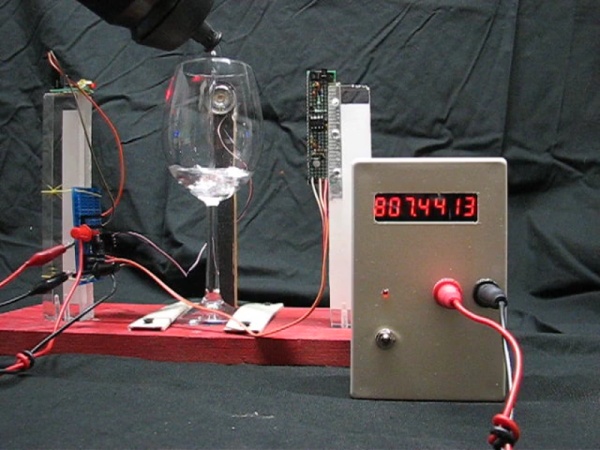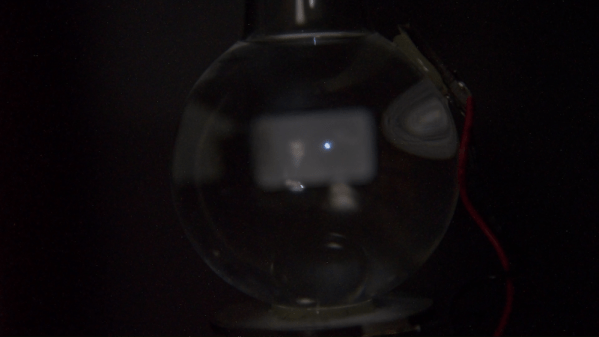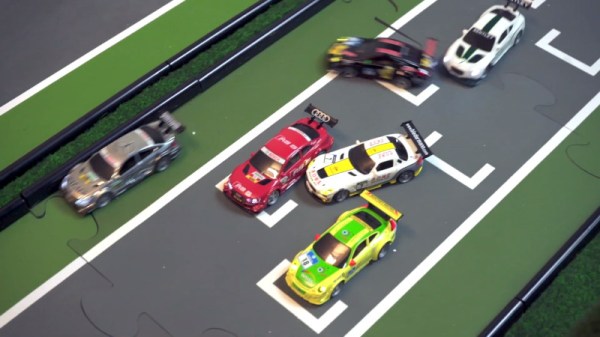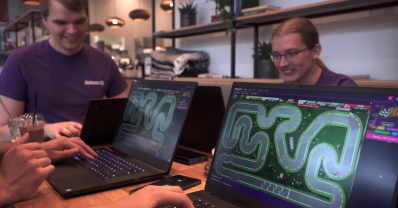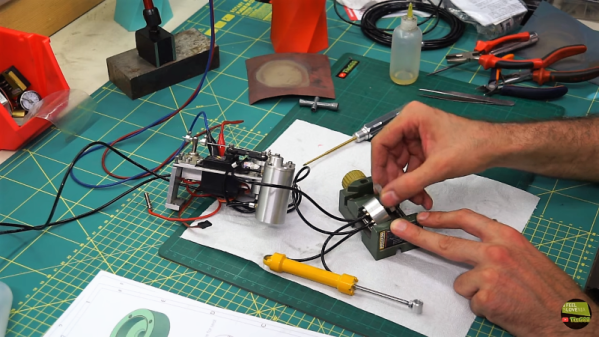Great things happen when we challenge ourselves. But when someone else says ‘I bet you can’t’ and you manage to pull it off, the reward is even greater. After [WilkoL] successfully made a tuning fork oscillator, his brother challenged him to make one out of a wine glass. We’ll drink to that!
First, [WilkoL] needed to find a way to make the wine glass vibrate continuously without having to stand there running a moistened finger around the edge. A piezo speaker mounted close by did the trick. Then he had to detect the sound waves, amplify them, and feed them back in.
After toying with the idea of making a laser microphone, and tossing aside the idea of a regular microphone (because squealing feedback), he settled on using light. LEDs didn’t work, probably because the light is too divergent. But he found out that by aiming a laser just right, the curve of the wine glass modulates the light, and the waves can be detected with a phototransistor. Then it was just a matter of amplifying the the sound and feeding it back to the piezo.
In the demo video after the break, you can see the vibrations in the glass manifest once he pours in some water. As anyone who’s ever played the water glasses can tell you, this also changes the frequency. [Editor’s note: I expected a much larger change in pitch. Not sure what’s going on here.]
Speaking of, here’s a steampunky glass armonica that uses an old turntable motor to rotate the wine glass, and a pneumatic cylinder to raise and lower the water level.
Continue reading “Homebrew Oscillator Is In A Glass By Itself”

